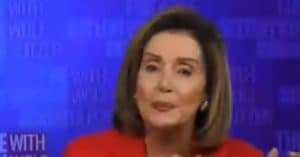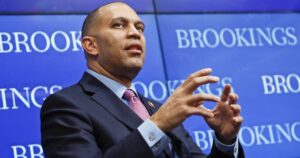Trump launches steep 'reciprocal' tariffs up to 70% on non-deal nations
Hold onto your wallets, folks—President Trump just dropped a trade bombshell that could reshape the global economic chessboard. Starting this Friday, nations without tentative trade agreements with the U.S. will face "reciprocal" tariffs, with rates climbing as high as 60-70%, the New York Post reported.
That’s a hefty price for playing hardball with American interests.
Trump’s latest move builds on his April 2 "Liberation Day" policy, which set a 10% baseline tariff—already triple the prior rates—and now escalates duties on countries with significant trade imbalances, aiming to level the playing field while risking higher costs for everyday goods.
Back on April 2, the administration rolled out that initial 10% tariff benchmark, targeting nations with glaring trade deficits. This was just the opening salvo in a broader strategy to protect American industry. Now, the stakes are even higher with this Friday’s announcement.
Escalating Tariffs Target Trade Imbalances
Trump plans to send letters to 10 or 12 countries starting Friday, with the process wrapping up by July 9. “We’re going to start sending letters out,” he said, signaling a no-nonsense approach. Well, turns out diplomacy sometimes comes with a price tag.
These new tariffs could hit as high as 70%, a jump from previously announced peaks like 49% for Cambodia and 48% for Laos. “They’ll range in value from maybe 60 or 70%,” Trump noted. That’s a bold flex, though it’s still unclear which nations will face the top rates.
Payments from these tariffs are expected to flow into U.S. coffers by August 1 in most cases. Trump promised, “The money will start to come in.” It’s a cash infusion for the nation, but at what cost to the average shopper?
Consumer Costs Spark Growing Concerns
Critics are already sounding the alarm over a potential spike in consumer goods prices due to these tariffs. Many everyday items sourced abroad could carry a heavier sticker shock, a pass-through effect that’s hard to ignore. It’s a bitter pill for those of us who value a strong economy but dread the checkout line.
Trump, however, remains focused on competitiveness, not re-shoring low-skill jobs like garment making. “We’re not looking to make sneakers,” he quipped. His sights are set on high-tech and heavy industry—think chips, not T-shirts.
Smaller countries, meanwhile, won’t see much change in their tariff rates. “As we get to the smaller countries, we’re pretty much going to keep the tariffs the same,” Trump assured. A small mercy, perhaps, for nations already struggling to compete.
Trade Deals Offer Some Relief
Some nations have dodged the worst of this trade storm through tentative agreements. Deals with China, the UK, and Vietnam, alongside concessions from Israel and Taiwan, show Trump’s willingness to negotiate when it suits American interests. Even a roadmap with India hints at progress.
The UK deal, for instance, keeps the 10% baseline but spares most British cars and steel from higher rates, while opening their markets to U.S. meat and ethanol. It’s a win for both sides, proving trade can be a two-way street. Still, one wonders if more partners could have been brought on board.
Contrast that with Japan, slapped with a 24% tariff, and the European Union, now facing a 50% rate—up from 20%—thanks to a pending digital tax on U.S. tech giants. That’s a sharp reminder that playing hardball with Uncle Sam has consequences. Negotiation deadlines loom this Wednesday, so the clock is ticking.
Mixed Signals on Economic Impact
Closer to home, USMCA keeps most Canadian and Mexican goods safe from this trade war, though Trump’s March tariffs of 25% on non-pact items tied to fentanyl and immigration issues still sting. It’s a targeted jab, not a blanket punishment. Balance, after all, matters in policy as much as in trade.
Meanwhile, U.S. economic indicators paint a rosy picture—job growth beat expectations in June, inflation sits at 2.4% near the Fed’s target, and stock indices hit record highs last week. That’s a strong backdrop for Trump’s gamble, even if tariff critics warn of turbulence ahead. Perhaps a robust economy can weather this storm better than naysayers think.
Countries like Bangladesh, Sri Lanka, Pakistan, and Indonesia—key players in clothing and footwear—face tariffs ranging from 29% to 44%, a hit to industries already squeezed by low labor costs. Trump’s focus on bigger fish like military tech and AI over socks and shirts might make sense strategically, but it leaves these nations in a tough spot. Here’s hoping the administration keeps an eye on the little guy while chasing those “big things.”




